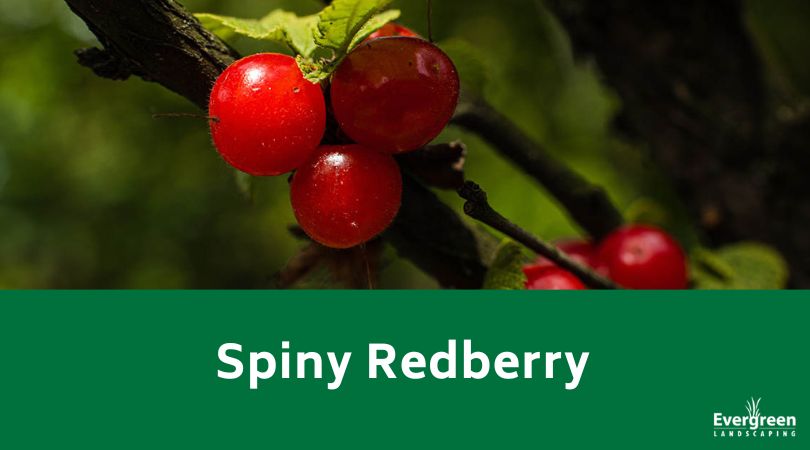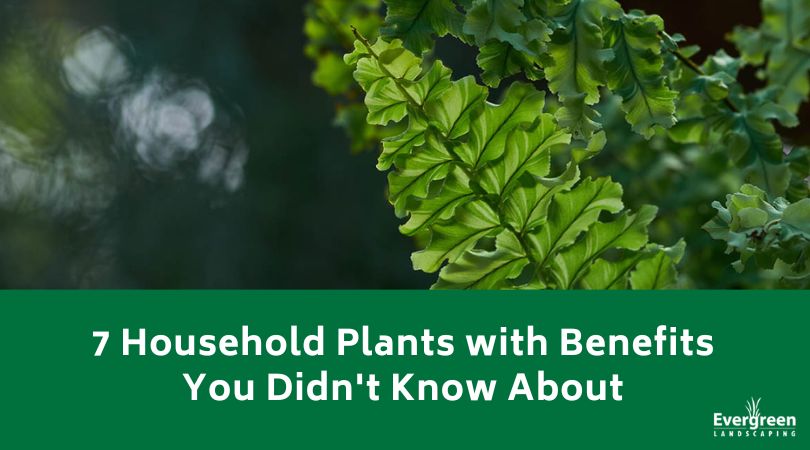
Is your garden looking a little wilted? Are your peppers, eggplant, and tomatoes not quite where you dreamed they would be when you planned your garden in the winter? Are you simply watering, weeding and harvesting and wondering if this is the best the garden will be?
With just a little bit of effort, you can give a boost to your plants and perhaps even reduce the time you spend watering and weeding.
Experienced gardeners understand gardening’s real work is not with plant care but readying the soil to create a successful environment and then boosting it to keep vegetables well fed. At the start of a season, gardeners might throw a bag or two of organic soil purchased from the local garden shop, or will add some amendments just before sowing, but otherwise believe the soil will do it on its own.
After everything is planted, it’s usually a simple routine of watering and weeding.
Think of all the energy the garden has been using and the soil has expended! Taking tiny seeds and nascent seedlings and turning them into food producing machines! At this time of year, the soil might be a little tired and could use a bit of a kick. And who could blame it?
These three simple things will provide that much needed boost for your garden. Doing all of them will give your garden the boost of a lifetime. However, each of these suggestions should improve your vegetable garden’s output.
1. Compost tea
If you’re like most suburbanites, you probably don’t have a compost pile brimming with decomposing plant matter in your back yard. However, there is a simple solution. You can purchase a bag of composted manure from your garden supply store.
Once that is secured, you can dump your homegrown or store bought compost into your garbage can or in a bucket. Add water and try to maintain about 1-30 ratio of compost to water. Allow the tea to steep for about 24 hours.
Water your garden with it.
2. Side dressing
Maybe you don’t want to figure out a 1-30 ratio or rummage around for receptacle to make compost tea. However, if compost tea is like a having a double shot of espresso for your garden, side dressing is more like a single shot – it will provide a boost but not as fast.
Once again, it starts with compost.
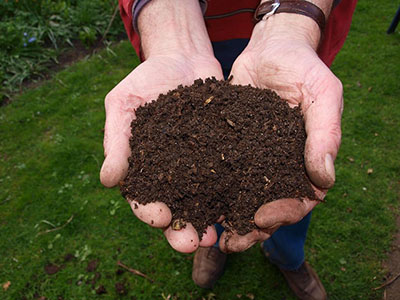
If you are side dressing a row crop like carrots or kale, you can make a small furrow 1-2 inches deep along side of each row. Add your nutrients. Water.
For individual plants like tomatoes, eggplant and peppers, add the compost matter around the plant stem. Water.
As the composted matter breaks down, it will work like intravenous with nutrients getting into the soil slowly.
all photos courtesy of www.creativecommons.org
3. Mulch
Mulching is a common tactic at the start of gardening season, but it can be useful in mid-season. As the first round of mulch has deteriorated under the summer sun, it’s no longer doing its job as a weed restrictor or offering nutrients. A new layer of several inches thick mulch will do the trick!

If you have grass clippings, you can place them in the rows and around plants. One caveat is that you may be inviting weeds into your future garden. For this season, it will reduce weeds in your garden and help retain moisture.
No grass clippings – don’t worry. Hay can be purchased and used instead. If you have a choice, look for weed free hay.
Like side dressing, mulch will help your garden in the long term as it will help build the soil’s organic matter.
These simple tips may reacquaint you with your garden, and you’ll enjoy the bounty for your effort.
Want more help with your landscaping efforts? Give us a call 805-773-5395.


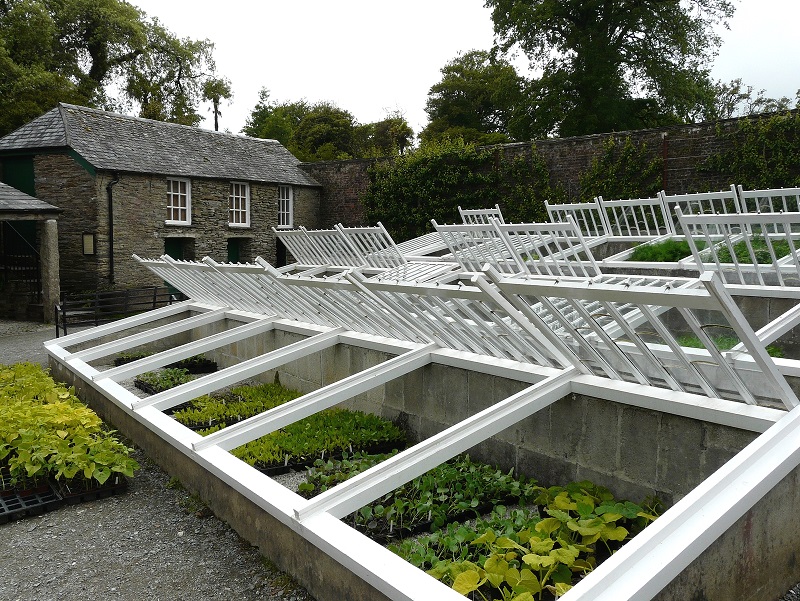
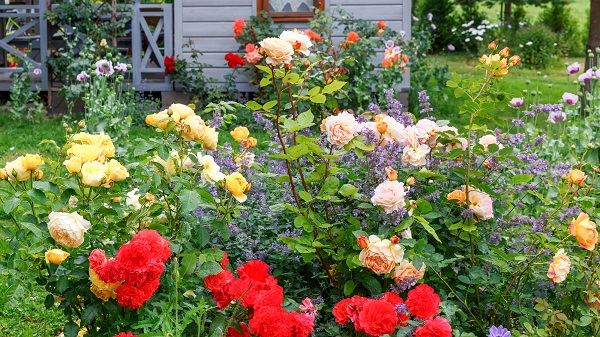
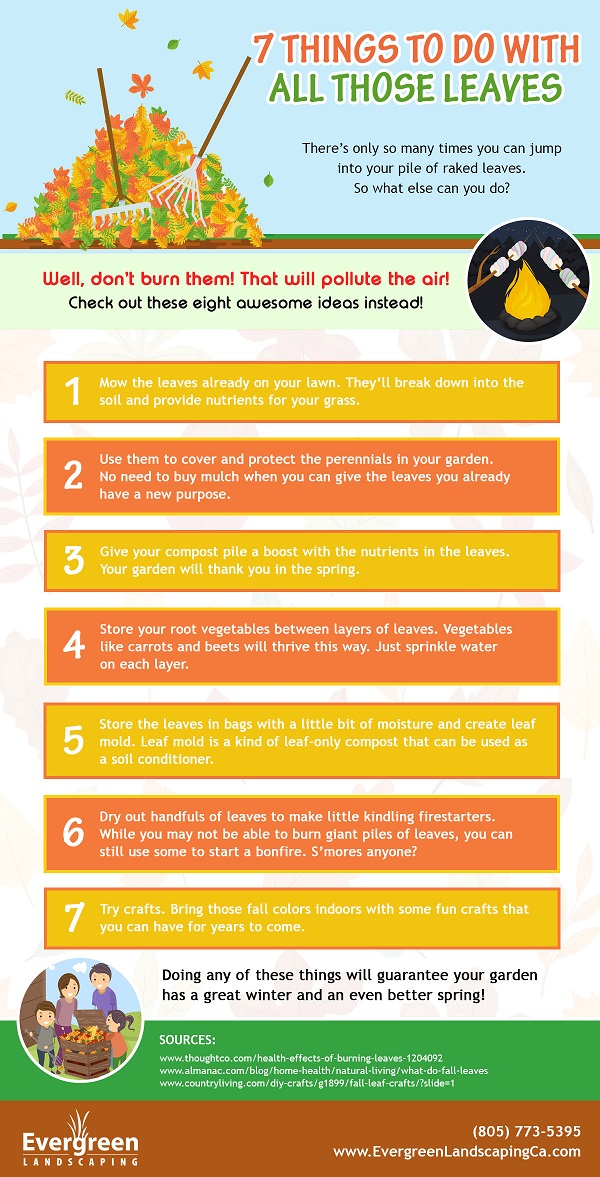

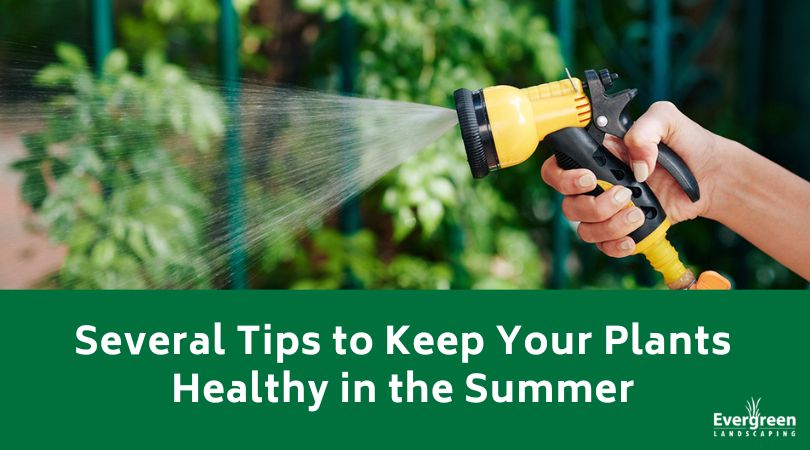

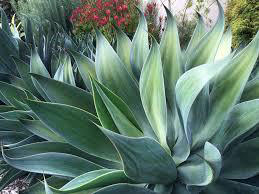
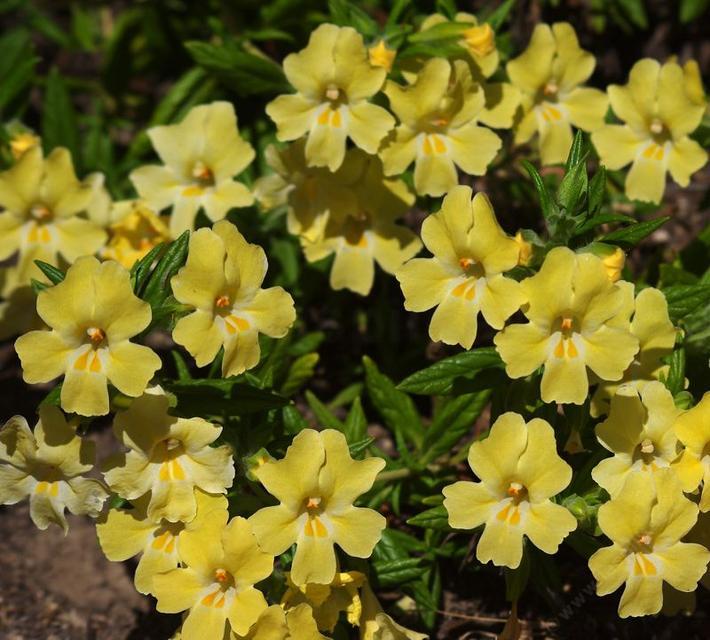 Just saying the name of it brings a smile! The flower is so named because it appears as though it’s a monkey grinning on the petals. This shrub can grow up to four feet tall and can prosper in a variety of soils. It prefers partial shade and a bit more moisture than some plants. The flowers are friends to pollinators. Both bees and hummingbirds are attracted to the California Monkey flowers and provide just one more point of interest for your garden.
Just saying the name of it brings a smile! The flower is so named because it appears as though it’s a monkey grinning on the petals. This shrub can grow up to four feet tall and can prosper in a variety of soils. It prefers partial shade and a bit more moisture than some plants. The flowers are friends to pollinators. Both bees and hummingbirds are attracted to the California Monkey flowers and provide just one more point of interest for your garden.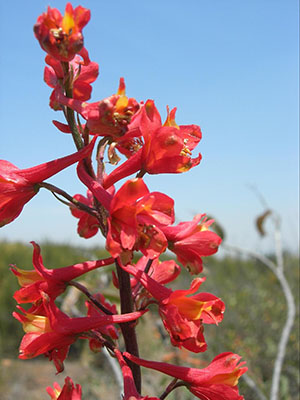 A wildflower native to California, the Delphinium Cardinale or as it is more commonly knows as, the scarlet or cardinal larkspur, can grow up to six feet high! Between their height and the red flowers, these will surely be a standout in the garden. They will grow in either full or partial shade and prefer rocky or sandy soil. Delphinium Cardinale will add activity to your garden, since they attract hummingbirds.
A wildflower native to California, the Delphinium Cardinale or as it is more commonly knows as, the scarlet or cardinal larkspur, can grow up to six feet high! Between their height and the red flowers, these will surely be a standout in the garden. They will grow in either full or partial shade and prefer rocky or sandy soil. Delphinium Cardinale will add activity to your garden, since they attract hummingbirds. Echeverias is a textural gem with its rosette design that draws the eye. With its fleshy blue-green flesh and edged in scarlet, Echeverias seem otherworldly and gives the garden a contrast between the textures of deciduous plants and succulents. Echeverias, like the Agave Blue Glow will work well with different colors in the garden. It can serve as a host plant for butterflies, can exist in a variety of different garden locals, and is low-maintenance.
Echeverias is a textural gem with its rosette design that draws the eye. With its fleshy blue-green flesh and edged in scarlet, Echeverias seem otherworldly and gives the garden a contrast between the textures of deciduous plants and succulents. Echeverias, like the Agave Blue Glow will work well with different colors in the garden. It can serve as a host plant for butterflies, can exist in a variety of different garden locals, and is low-maintenance.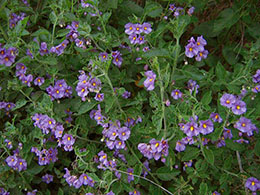 This perennial will not only catch your eye with clusters of purplish-blue flowers and hairy stems but your nose with its sweet fragrance. A plant native to the Central Coast, Hoffman’s Nightshade is extremely versatile since it can be grown in a variety of soils and can handle full or partial sunlight. One caveat, it can be poisonous to humans and some animals so this may be a consideration.
This perennial will not only catch your eye with clusters of purplish-blue flowers and hairy stems but your nose with its sweet fragrance. A plant native to the Central Coast, Hoffman’s Nightshade is extremely versatile since it can be grown in a variety of soils and can handle full or partial sunlight. One caveat, it can be poisonous to humans and some animals so this may be a consideration.


